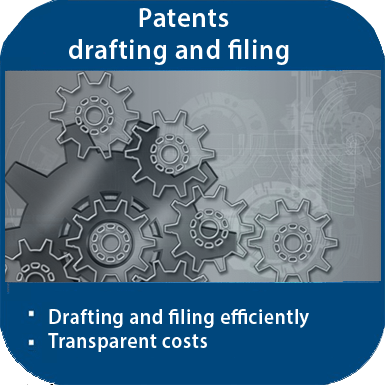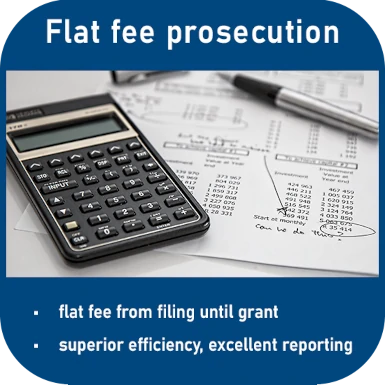EPO: Patent in optical distance measurement – novelty?

In the EPO decision (T 1985/19 of 22.9.2022) on a European patent in the field of optical distance measurement, the scope of protection of the contested patent in suit, Optical Distance measurement, has been limited in the opposition proceedings and again was limited in the subsequent appeal proceedings.
The decision provides a good insight into how, in the field of optical distance measurement, an invention can be considered new and inventive, even though the optical distance measurement of publication D1, as the closest prior art, is already quite close to the claimed distance measurement.
The facts
Already in the previous instance, the patent in suit Electro-optical distance meter and distance measuring method (EP 2998700) of the patent proprietor, Hexagon Technology Center GmbH, the patent in suit was maintained in amended form, according to the first auxiliary request at that time.
However, this was not sufficient for the opponent, SICK AG. Before the European Patent Office (EPO) board of appeal, it again attacked the patent in suit, relying on the grounds of lack of novelty and lack of inventive steps.
The issue at this hearing was whether and to what extent the patent in suit, maintained in amended form, differed from citation D1 (D1 = EP 1 879 044 A1).
Comparison between closest prior art and patent in suit
The opposition division first identified the following similarities between D1 and the patent in suit, which was maintained in the amended form:
- Subject-matter: (Electro) Optical distance measurement
- Optical distance meter
- using a photodiode-based detector
- with different light-sensitive areas
- with two photodiodes PD and APD of the detector
- with gain factors (in D1 "independently adjustable", in the patent in suit "different")
Accordingly, the patent in suit differed from D1 in particular by:
a) specific designs for the light-receiving circuitry
b) a certain photosensitive receiving component
c) certain amplification factors
Optical distance measurement: Photosensitive receiving component distinctive?
In its argumentation before the board of appeal, the patent proprietor relied on what it considered to be distinctive features of its patent. The patent proprietor argued that the claimed subject-matter of the patent in suit differed from the distance meter of publication D1 by features a) and b) in the detector "with a photosensitive receiving component" and by feature c).
However, the board of appeal rejected this argumentation. The broad wording of claim 1 did not exclude that the receiving component consisted of different components or subcomponents. In turn, the receiving component of the distance meter of publication D1 could be regarded as a detector or at least as a component of a single detector within the meaning of claim 1.
The EPO also rejected the patentee's argument that the different amplification factors of the patent in suit were distinctive compared to D1 (feature c)). Publication D1 disclosed two amplifiers with independently adjustable amplification factors. Moreover, the distance meter in D1 was based on the fundamentally different properties of the two photodiodes, in particular on the different light sensitivities.
For these reasons, the Board of Appeal concluded - contrary to the decision of the Opposition Division - that the subject matter of claim 1 according to the then first auxiliary request was not new compared to publication D1 (Articles 52(1) and 54(1) EPC).
Maintenance according to "auxiliary request 2" - novelty?
Therefore, the patent proprietor requested maintenance of its patent in suit in amended form on the basis of claims 1 to 15 of the auxiliary request filed as "auxiliary request 2" by letter of 13 January 2020. The essential point is that the maintenance of the patent was thus pursued with the aid of variants that were only listed as optional in the originally granted claim 1.
Does this fulfill the claim of novelty?
A key phrase on this issue is found in D1, which states: "The light receiving circuits" include a PD 15A or an APD 15B, an amplifier 16A or 16B, and an A/D converter 17A or 17B, respectively ". The EPO board of appeal explained that the skilled person would not consider the expression "include a PD 15A or an APD 15B" in isolation. Rather, the skilled person would understand this expression in its context both from a linguistic point of view (see the expression "respectively") and from a technical point of view in the sense that a first of the two light-receiving circuits comprises a photodiode PD and the second light-receiving circuit comprises a photodiode.
While the detector of publication D1 consisted of two photodiodes PD and APD, the board explained, the detector of the patent in suit consisted of a segmented avalanche photodiode APD, so that the receiving component had two independent APD segments as receiving segments.
Accordingly, the patent in suit fulfilled novelty to the extent of auxiliary request 2.
Light reception circuit in optical distance measurement: inventive?
The focus was now on the question of inventive steps, in particular with regard to the light-receiving circuit. Was the use of two photodiodes APD claimed in the patent in suit readily ascertainable from the disclosure in D1?
The board of appeal summarised the basic idea of the distance meters in D1. The main idea was to exploit the different light sensitivities of two photodiodes in order to measure the distance of a light-reflecting object.
In this technical context, the skilled person had no reason to dispense with the use of two photodiodes with different light sensitivities, the Board of Appeal said. And he certainly had no reason to replace the two photodiodes PD and APD with different light sensitivities of the D1 print with two photodiodes with the same light sensitivity. Because then he would have to ask himself what technical adjustments to the distance meter in print D1 would be necessary for it to remain functional.
In view of the different modes of operation of the detectors of publications D1 and D7, there was also no reason for the skilled person to look in publication D7 for solutions to the task set for him, let alone to consider replacing the two photodiodes PD and APD of the detector of publication D1 by a segmented APD photodiode and then to deal with its evaluation.
EP patent Optical distance measurement according to 'auxiliary request 2'
The EPO Board of Appeal, therefore, considered the requirement of inventive step for the patent in suit according to auxiliary request 2 to be fulfilled and set aside the contested decision of the opposition division. Moreover, the features of the distance meter of claim 1 were in any case a prerequisite for carrying out the distance measuring method according to independent claim 14.
Therefore, the patent in suit is maintained with the following version:
- Claims: 1 to 15 filed as "auxiliary request 2" by letter dated 13 January 2020.
- Description: Pages 2 to 16 of the patent specification (with partial substitutions).
- Drawings: Pages 24 to 35 of the patent specification
Conclusion
The maintenance of the patent was pursued with the help of variants that were only optional in the originally granted claim 1. Once again, this shows how important precise wording in the patent application is.
Our patent law firm has particular expertise in this area. This is appreciated by our clients, as is our transparent cost structure. Please contact us without obligation, by phone at +49 (0)69 69 59 60-0 or info@kollner.eu.







